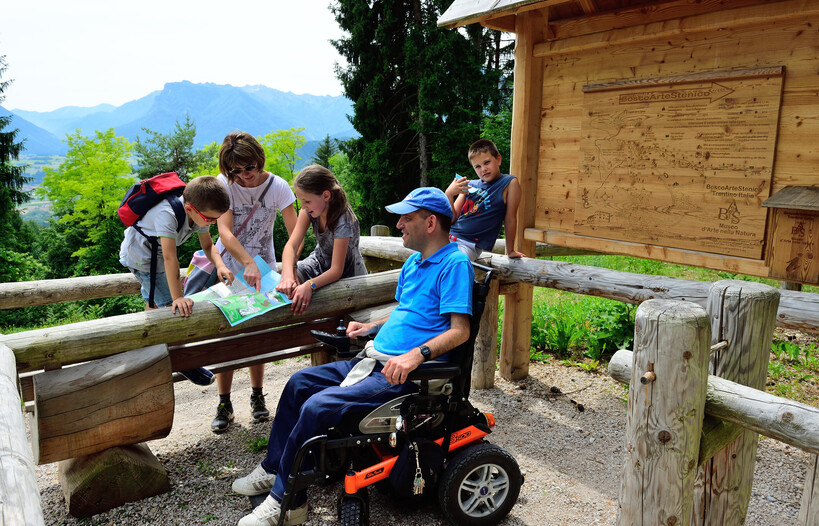Bosco Arte Stenico
A Trentino experience for everyone
In Trentino, land art is for everyone.
Bosco Arte Stenico is a totally accessible nature and art trail organised to accommodate people with motor disabilities as well as the blind and visually impaired.
Moving without barriers
Bosco Arte Stenico has no architectural barriers and anyone can visit it: families with children and trekking buggies, the elderly and people with disabilities.
The path is circular, with no differences in level and no bottlenecks or passage difficulties. At several points along the trail there are tables, benches, toilets and drinking fountains accessible to wheelchair users.
The surface of the path is not asphalted but is smooth and a person in a wheelchair can walk along it independently. There are no steps or ramps that would make the walk difficult to use.
Even the viewpoint, which overlooks Stenico Castle, can be reached safely by everyone.
Moreover, every 150 metres there is a bench that can offer a moment of refreshment for those who need to rest during the walk.
To admire the interweaving of art and woodland, simply drive to the car park that overlooks the entrance reserved for people with motor disabilities. From there, the adventure begins, whether you travel independently or not, alone or accompanied.

Hearing and "feeling" the installations
Bosco Arte Stenico is also designed to accommodate blind and visually impaired people who, accompanied by guides, can touch the installations to recognise form and texture.
In these situations, the presence of a guide is obligatory both to move around safely and to listen to the history and characteristics of the works.
The maps you encounter along the way are carved in wood. They do not have Braille inscriptions, but can be touched and give tactile information on how the route unfolds.
It is not essential to see the works to know them. Here, art has found other ways to reach everyone.
How to access Bosco Arte Stenico
You can visit the path independently, but it is compulsory to book.
Up to five people, the trail is free with an offer: above five people, however, there is an obligation to take a guided tour.
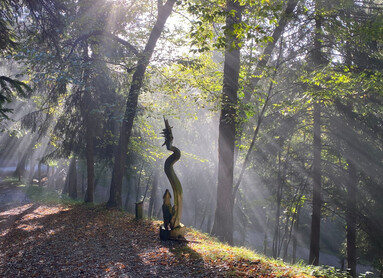
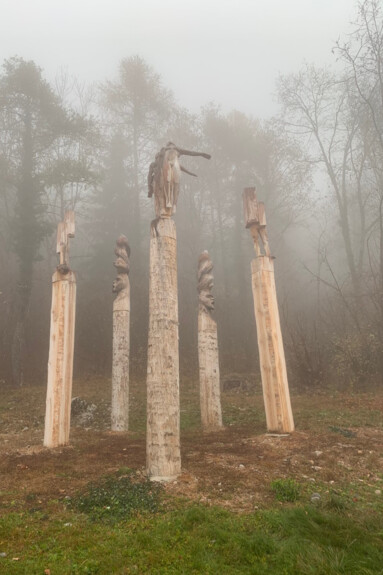
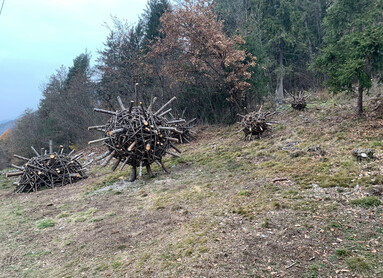
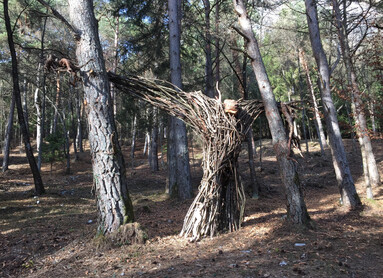


Where borders thin out
In Trentino, art and nature intertwine.
Bosco Arte Stenico is an example of land art in which there is no real separation between the works and the landscape: along a path of about 2 kilometres through pines, larches and beeches, you can admire over a hundred art installations.
Statues and installations sprout from the grass, embrace trunks, cling to branches. They dialogue with the elements of the forest and, at the same time, with you who walk through it.
The works themselves arise from nature, like an extension of it.
The wood they are made of comes from cleaning larch, lime, pine, oak and spruce trees. It is all recycled material: each artist chooses only what the forest no longer needs, respecting its space and balance.
It is as if the forest itself decides which branches and roots to grant to art.
The life of the works also adapts to natural rhythms. The installations and statues are not maintained. They are born in the forest and in the forest they die. They absorb rain, snow, they experience the passing of the seasons like trees, like birds' nests.
In this path, there is no separation between what art constructs and what forms spontaneously in nature. The sun filtering through the leaves seems to change the shape of the works minute by minute, the trickling of the fountain gives rhythm to the path.
Respect for nature, respect for people
Bosco Arte Stenico is a place where everything lives in a delicate balance with the elements around it. Like every work of art and nature, it requires care and great attention. It is a place that welcomes everyone, a sensitive place where the story that art and the forest tell is made of wood and the scent of resin.
-
We have not included a specific reference to cognitive-relational accessibility because, given the variety and complexity, we recommend that individuals contact the places they wish to visit to learn about the available accommodations and assess for themselves how to enjoy the experience.
-
We advise everyone to check the websites or directly contact the places they wish to visit to ensure the experience is suitable and to assess independently how to enjoy the place or the experience.
